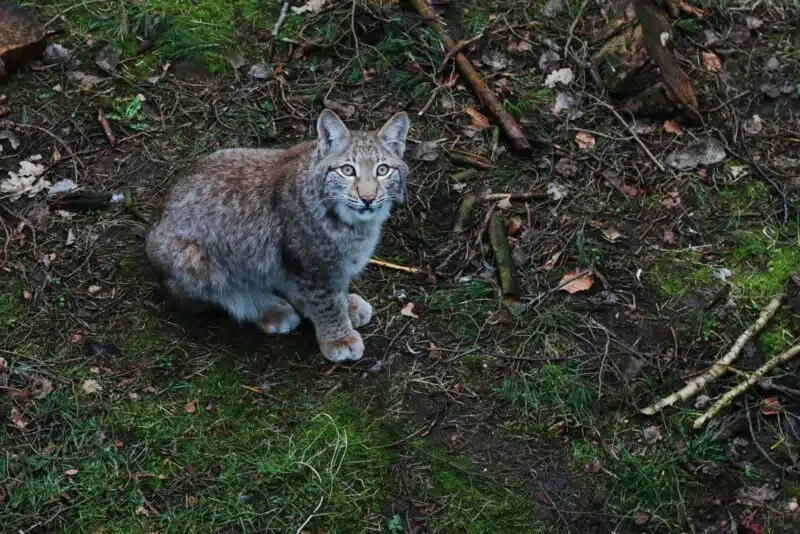The state of Minnesota is home to many species of endangered animals, some of which may not survive future generations if drastic steps are not taken to protect them.
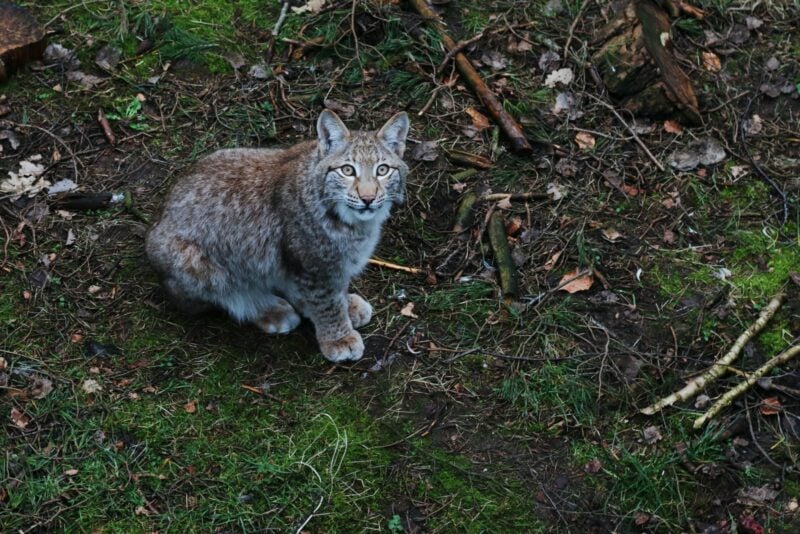
Minnesota is the northernmost state in the contingent USA. As such, it experiences extreme temperate weather but also particularly cold winters. This geography makes it an ideal habitat for several arctic and alpine species.
Minnesota also accommodates abundant freshwater species – after all it is nicknamed the Land of 10,000 lakes for a reason. It houses Lake Itasca, the headwater of the Mississippi River, and about 14,000 other freshwater bodies. Fish like trout, pike, bass, and muskies populates these rivers and streams.
Although Minnesota has its fair share of prairies, deciduous and coniferous forests make up a third of its landmass. If you’re a wildlife fan it might interest you to know that the state has 58 designated forests and 72 state parks. These forests accommodate popular mammalian species like moose, elk, caribou, white-tailed deer, timber wolf, black bear, and bobcats.
You will also find plenty of gamebirds and birds of prey in Minnesota. Everything from waterfowls (like geese and ducks) to prairie birds (like grouse and pheasants) and raptors like (bald eagles and red-tailed hawks) call this state home.
Threats To Endangered Animals In Minnesota
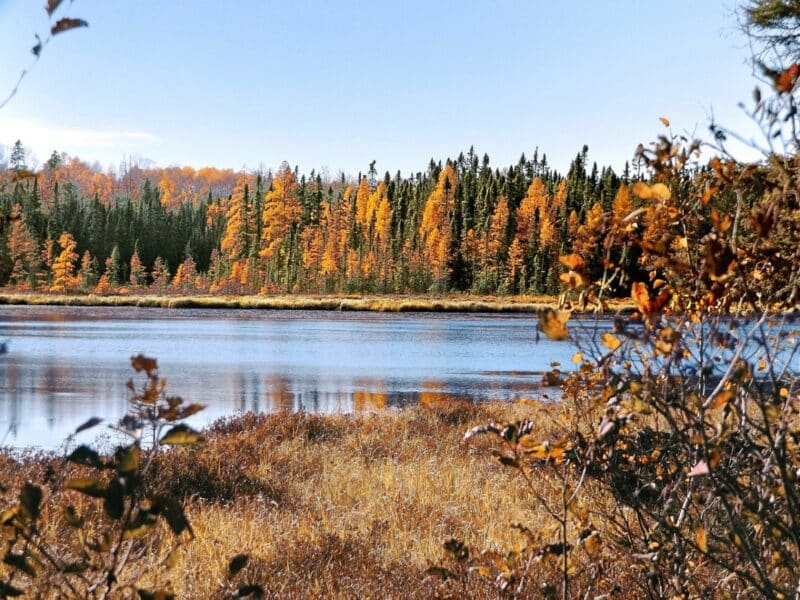
The leading factors affecting biodiversity in Minnesota are habitat loss, disease, wildlife exploitation, overhunting, and the introduction of non-native species. It is crucial to understand the threats these animals face so that we can protect them and ensure that Minnesota continues to be home to a wide variety of wildlife.
This article will discuss the 14 most endangered animals in Minnesota. We will review each species, discussing their current status and what we can do to help save them. With the help of local communities, conservation groups, and government agencies, we can save these animals from the brink of extinction and increase their numbers.
The 14 Most Endangered Animals in Minnesota
#1 Dakota Skipper
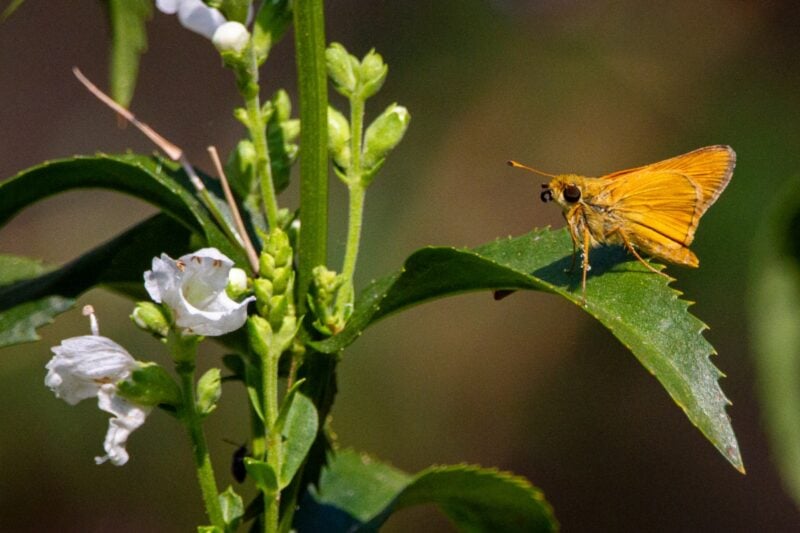
The Dakota skipper is an insect native to Minnesota and the Dakotas. It belongs to the Hesperiidae family and the genus of skipper butterflies. The species is listed as endangered by the US Fish and Wildlife Service, with its entire global population existing in the area between Minnesota and North- and South Dakota. As a result, they are also considered endangered animals in Minnesota by Minnesota Fish and Wildlife.
The Dakota skipper is a small, dusty yellow-colored butterfly about an inch long. It mostly inhabits rocky prairie hillsides and meadows where its host plant, the wild prairie roses, grows. These butterflies have a preference for nectar from the bluestem and needle grass. But an adult butterfly is likely to feed on nectar from other nearby flowers as well.
The larvae of the butterfly feed on the roots of the prairie roses. Prairie roses contain a long taproot essential for their growth, making them an ideal host plant for the Dakota skipper.
Pollution, over-grazing by livestock, the reduction of native plant species, and climate change have contributed to the decline in the species.
#2 Eastern Massasauga
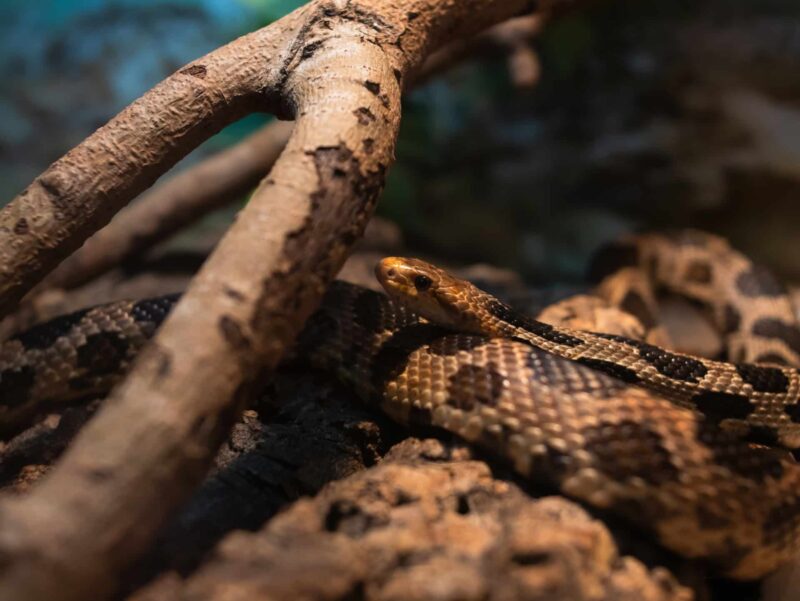
The eastern massasauga is a small and venomous rattlesnake native to the Great Lakes region, including Minnesota. They are listed as endangered animals in Minnesota, where their population is estimated to constitute less than 100 snakes. The US Fish and Wildlife Service has listed it as a “species of concern” since 2002.
The massasauga is a small serpent with dark brown to olive-colored scales. They’re a shy species and prefer to avoid human interaction. Being a semi-aquatic snake, it lives in marshes, swamps, and wet meadows. It resides in the southern half of Minnesota, with a few isolated populations in the northeast and northwest corners of the state.
This snake is especially sensitive to changes in the environment. It has declined in numbers due to historical habitat loss and water pollution, as well as recent efforts to eliminate it as a threat to humans.
#3 Rusty Patched Bumble Bee
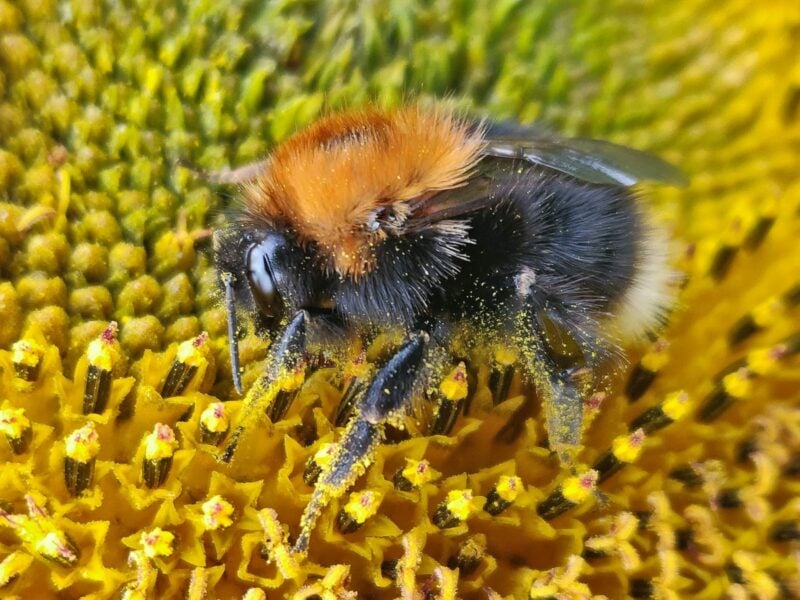
Rusty Patched bumble bees were once common in Minnesota and across much of the United States. Now, these endangered animals in Minnesota are listed as a “candidate species” by the USFWS, and the Canadian government deems them to be “threatened.” Likewise, the species is listed as critically endangered by the International Union for Conservation of Nature (IUCN).
Bumble bees are essential pollinators in many ecosystems and are especially important for wildflowers and other crops, including many fruits and vegetables. This species of bumble bee has a rusty brown patch on the back of each wing and a black abdomen. It is a medium-sized bee, and the black and white stripe on its face make it easy to identify.
The rusty patched bumble bee nests in ground-nesting materials, typically decaying leaves of plants and shrubs. Sometimes they also use artificial materials for nesting, like paper bags and wooden shingles.
#4 Whooping Crane
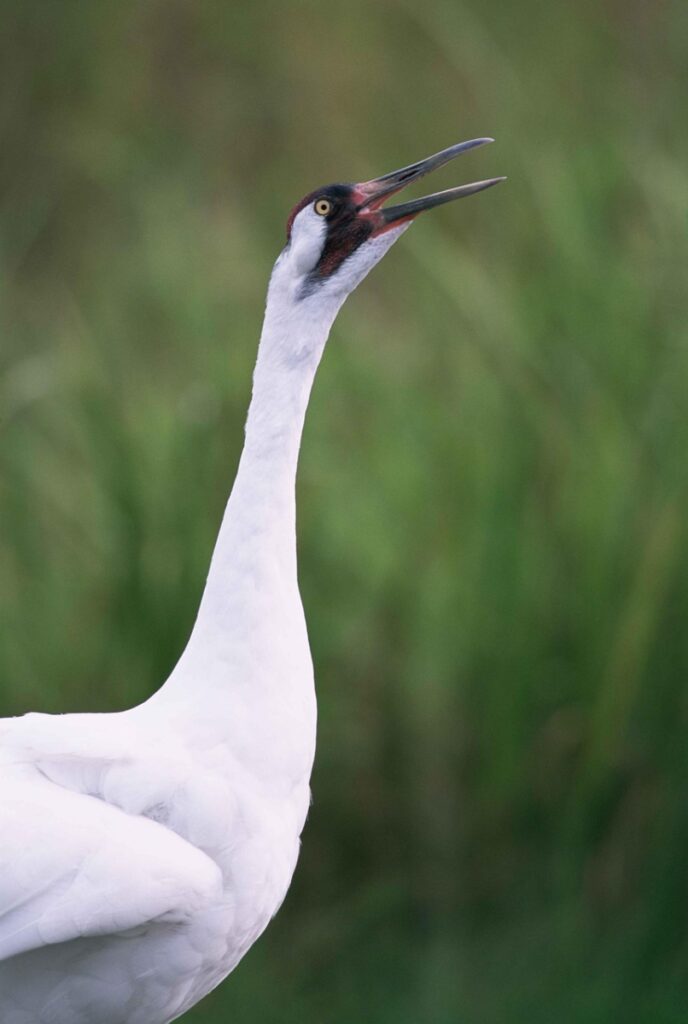
The whooping crane is a tall, long-legged bird native to the central and eastern United States, including Minnesota. It is listed as endangered by the USFWS and is a federally protected species. This species is on the brink of extinction and became endangered as early as 1967.
Luckily, the whooping crane population has increased since then and has climbed to about 600 birds, half of which reside in Minnesota.
This migratory bird travels from its breeding grounds in southern Canada and the northern United States to its wintering grounds in southern Mexico. Primarily they reside in marshy areas, like coastal wetlands and large lakes, where it feeds on various aquatic organisms. There are several breeding facilities in the Midwest which breed whooping cranes and then release them into the wild in an attempt to save the species.
#5 Piping Plover
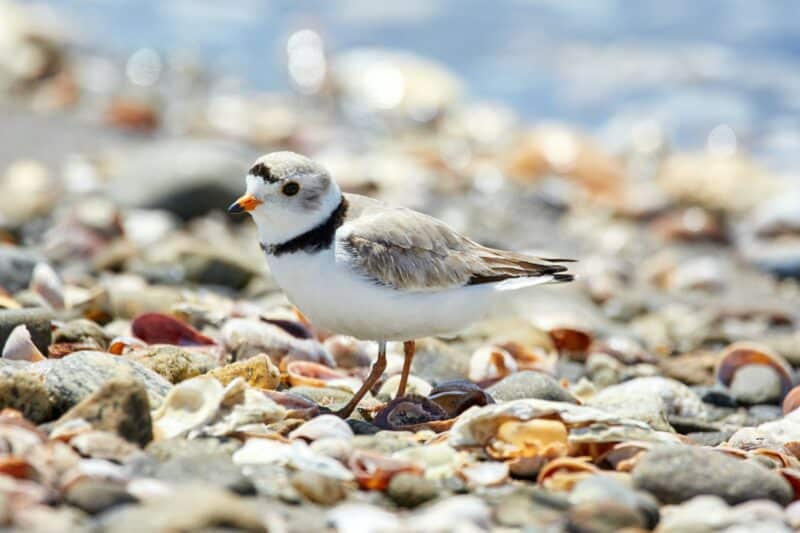
Piping plovers are small shorebirds listed as endangered animals not only in Minnesota but throughout much of their range in the United States. The species is migratory, breeding in the Canadian tundra and migrating south along the Atlantic coast during winter.
Areas critical for the piping plover’s survival include sandy beaches, lake shores, and coastal areas. Habitat loss, human disturbance, and predation from common species (e.g raccoon) all pose a threat to this little bird.
They produce a distinct piping sound while feeding, granting them their name. The species is small, only weighing between three and five ounces. Their sandy-colored feathers, white underbelly, and black feet serve as camouflage when on coastal shores and beaches.
Plovers are a critical species for coastal ecosystems, as they are an important food source for many aquatic species. The piping plover has experienced a dramatic decline in its population since the 1950s. As a result, it is now listed as threatened in almost every part of its range.
#6 Gray Wolf
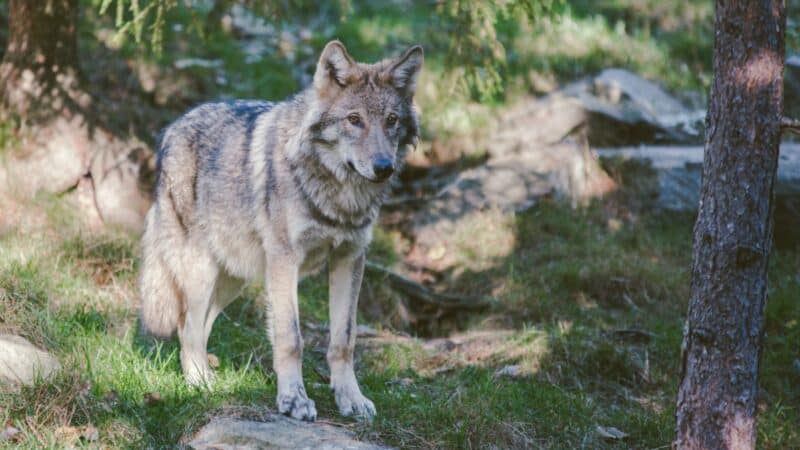
The gray wolf is a large, gray-colored mammal with long, black legs and a bushy tail. It weighs around 50 pounds and measures two to three feet long. The species is highly adaptable and can thrive in many environments, ranging from mountainous to temperate regions.
Although being apex predators, gray wolves are classified as endangered animals in Minnesota. The gray wolf was once common in the United States, but since the beginning of the 20th century they’ve been declining in numbers. Hunting and trapping, habitat loss, and other factors are the main causes of their declining population. In the 1940s, these wolves were nearly completely eradicated in Minnesota. The species has since been recovering in the state despite still facing many threats, especially from humans.
#7 Loggerhead Shrike
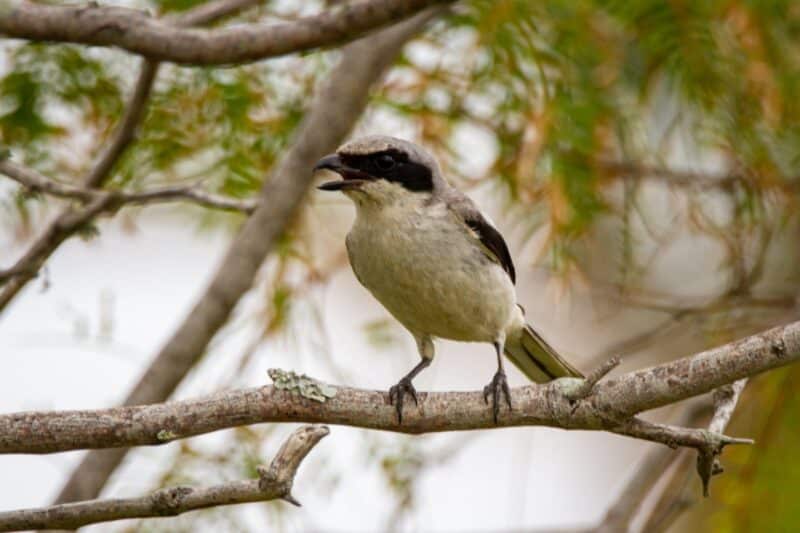
Nicknamed the butcherbird, the loggerhead shrike is a large, black-and-white songbird native to North America. It gets its nickname from its tendency to impale its prey on thorns and barbed wire before consuming them.
It is listed as a “species of concern” by the USFWS, and its numbers are declining due to factors like climate change and loss of nesting sites. This species is extremely sensitive to environmental changes and requires specific nesting conditions. Other threats include several predators, especially the great horned owl.
Loggerhead shrikes are a migratory species that travel from the southern United States to the southern coast of Mexico in the winter. It breeds in nests found in trees and other high-structured areas, including utility poles. The shrike is a carnivorous species that feeds on insects, reptiles, and small mammals. It has long, sharp claws that aid them in efficiently catching its prey.
#8 Northern Long-Eared Bat
The northern long-eared bat is a small, brown-colored bat endemic to the eastern United States, including Minnesota. They are listed as endangered in Minnesota and are currently being considered for inclusion in the federal list.
This bat species is only found in North America and is easy to recognize due to its long ears. It has a small size, with a weight of 5 to 8 grams and a size of 8.6 cm on average. Its echolocation calls are quieter than other bat species, which makes it suitable for foraging in forests.
Even though these bats have a large geographical range, their population is still in danger. The main reason for this decline is white-nose syndrome, a fungal infection. This decrease in their numbers has serious ecological and economic effects. It implies fewer bats are consuming insects, which can lead to a high rate of insect crop damage.
#9 Canadian Lynx
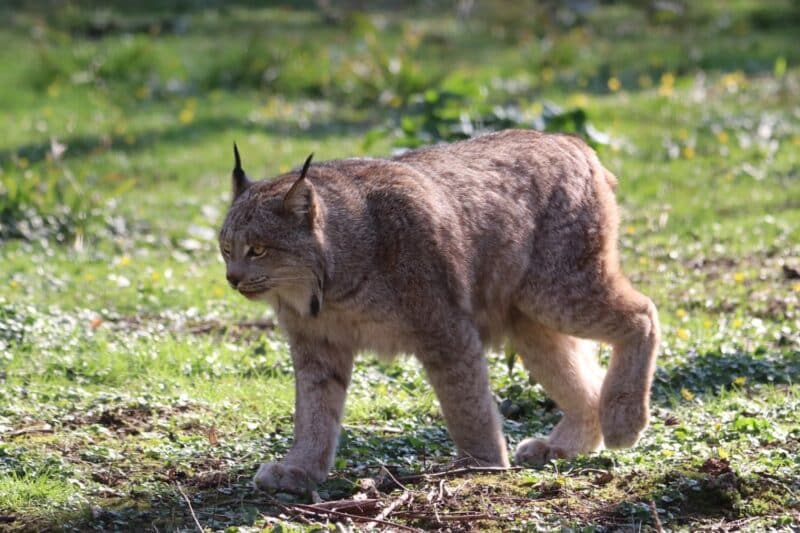
Canadian lynxes are wild cats native to Minnesota, its surrounding states, and Canada. It is one of the most endangered animals in Minnesota and is listed as threatened under the Endangered Species Act. The lynx is a solitary and nocturnal animal rarely seen. Still, its presence is often indicated by its tracks and scat.
The primary threats to the Canadian lynx are habitat loss, urban encroachment, and global warming. Habitat loss is a major issue because lynxes need large boreal forest areas to survive. They are also susceptible to road mortality when crossing roads in search of food. Global warming is another threat because it leads to shorter winters, which can reduce prey availability.
#10 The Topeka Shiner
The Topeka shiner is a small fish with bright red eyes and a silver body. It is found throughout the Mississippi River basin, from Minnesota to Kansas. It is a minnow fish growing up to three inches and favors shallow cold prairie streams that flow year-long.
Topeka shiners are particularly sensitive to changes in water quality, so they are easily affected by pollution from sewage and runoff. This makes habitat loss a major issue because the fish needs clean and undisturbed water to survive.
#11 Snuffbox Mussel
Snuffbox mussels are considered endangered animals not only in Minnesota but also in several US states and Canada. These freshwater mussels are small and round, with yellow or greenish shells. They inhabit clean, shallow rivers and streams with gravel or sand bottoms.
In order to protect the snuffbox mussel, it is important to reduce pollution and preserve its habitats. We can do this by minimizing runoff from farms and urban areas, restoring rivers and streams, and creating buffer zones along rivers and streams. Additionally, educating the public about preserving these habitats is key to ensuring their survival.
#12 Karner Blue Butterfly
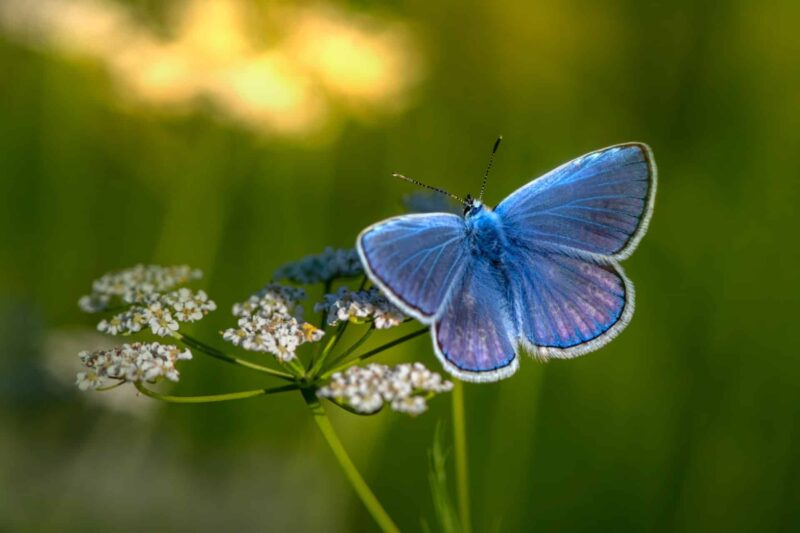
The Karner blue butterfly is a small butterfly found in Minnesota and the Great Lakes region of North America. It’s a small blue butterfly with a wingspan of less than one inch. It prefers open areas with little vegetation, such as prairie grasslands.
They rely heavily on the Wild lupine as a larval host plant but require a mixed habitat when mature. Similarily, they have a mutualistic relationship with some ant species, which helps them tend to unhatched larvae. Karner blue butterflies are the official state butterflies of New Hampshire. Still, they are considered endangered animals in Minnesota as well.
Habitat loss is a major issue for Karner butterflies as they need open areas with little vegetation to survive. Climate change is also a major threat because it can reduce the butterfly’s food sources and cause extreme temperatures which they cannot endure.
#13 Swift Fox
This canid gets its name from its amazing ability to run at speeds of up to 40mph. The swift fox is very small in size, roughly the same size as a domestic cat. It prefers open areas with little vegetation, such as grasslands and prairies.
Previously it used to be abundant in Minnesota, but its range is now limited. These days they occur more commonly in southern Midwest states like Missouri, Illinois, and Kansas. As a result, swift foxes are recognized by state authorities as endangered animals in Minnesota. However, the IUCN lists them as Least Concern.
They are nocturnal creatures, doing most of their foraging at night, but may come out during the day on cooler days. Like all foxes, they are omnivorous, feeding on a diet that includes fruits, legumes, insects, rodents, and carrion.
#14 Hine’s Emerald Dragonfly
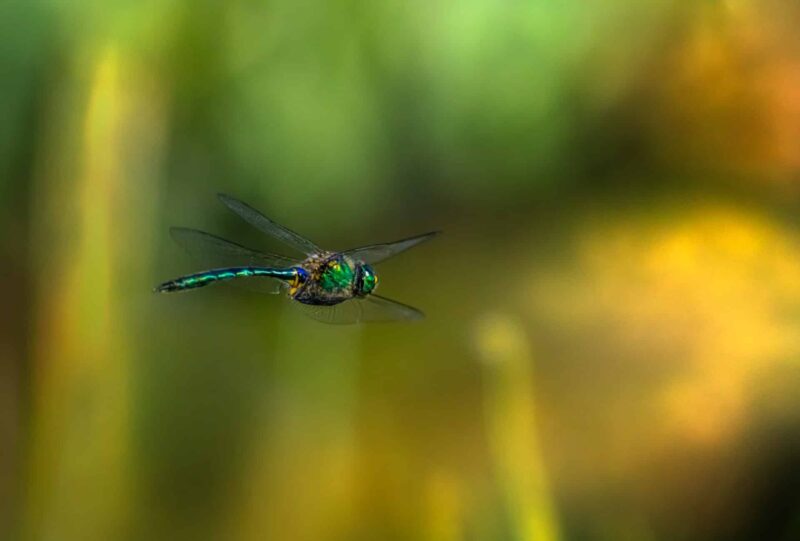
Hine’s emerald dragonfly is endemic to Northern USA and Canada. Here, it is found along pools, ponds, streams, and marshes.
Emerald dragonflies are large, green dragonflies with wingspans up to three inches. They prefer open areas with little vegetation, such as sand dunes or prairies.
The USFWS added these dragonflies to the list of animals covered by the Endangered Species Act in 1995. The existential threats that warranted their inclusion still hold today, including habitat fragmentation, water pollution, and invasive animal species.
Conclusion
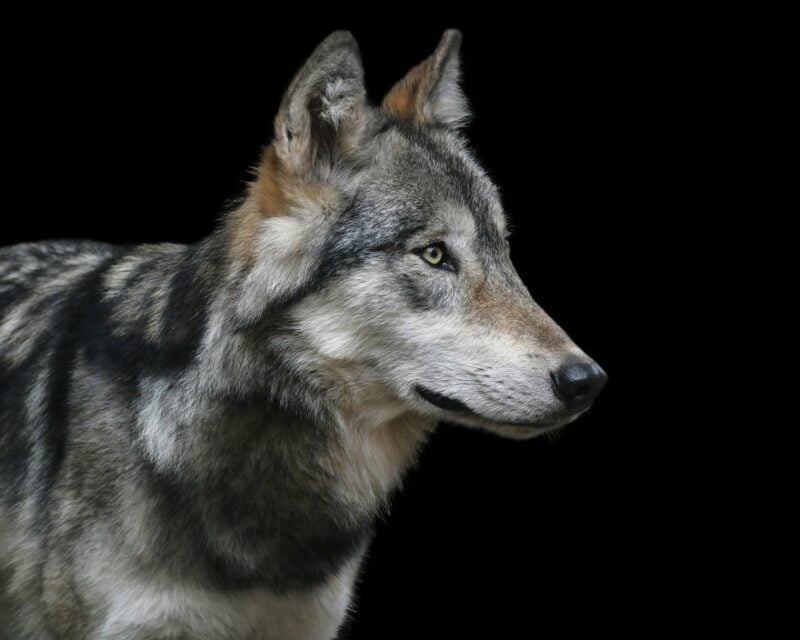
The whole planet’s biodiversity is drastically declining, and Minnesota is no exception. While mother nature is incredibly beautiful, she is also incredibly fragile – growing more and more vulnerable as human activity and establishments expand.
Habitat loss, global warming, air- and water pollution, hunting and human expansion constitute the primary reasons that animals are becoming increasingly endangered in the state of Minnesota. Although their vulnerable status are widely acknowledged and many of the species listed here are federally protected, it is not enough to ensure their survival.
Without sufficient conservation efforts the generations to come will not have the opportunity to appreciate these wonderful members of the animal kingdom.
Thank you for reading this article! Many other species around the world are facing the very same threats as the endangered animals in Minnesota. Continue educating yourself and read about the Most Endangered Animals in Kansas.
Join our Forum for free today!


